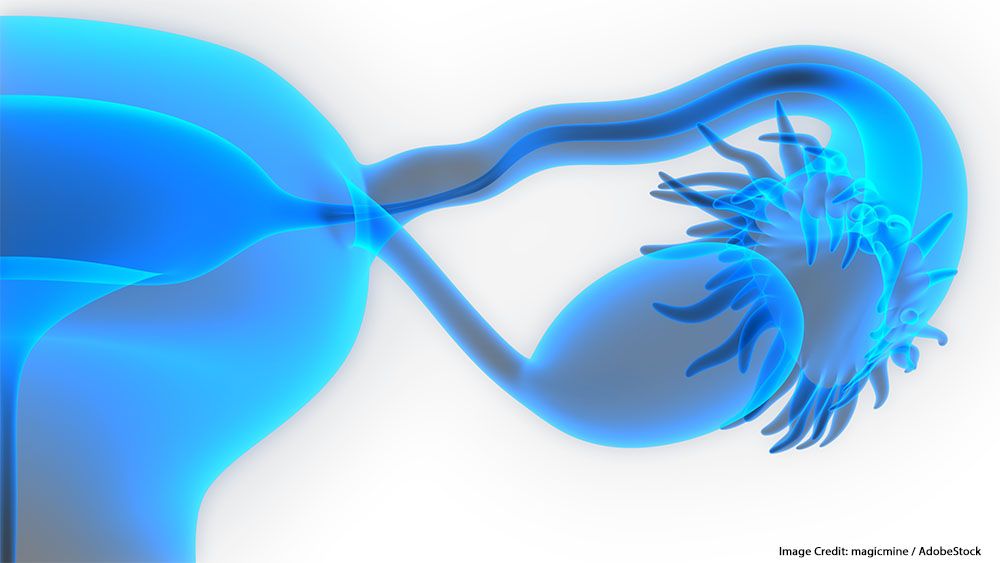Dose Modification of Maintenance Niraparib May Not Impact PFS in Ovarian Cancer
A post hoc analysis demonstrated that dose modifications to frontline niraparib maintenance therapy did not affect progression-free survival among patients with newly diagnosed, advanced ovarian cancer.
An individualized starting dose of maintenance niraparib (Zejula) followed by dose modifications due to treatment-emergent adverse events (TEAEs) in patients with newly diagnosed, advanced ovarian cancer did not impact efficacy, regardless of BRCA status, according to post hoc analysis results from the phase 3 PRIME trial (NCT03709316).
The PRIME trial included a total of 384 patients with newly diagnosed advanced ovarian cancer, including 255 in the niraparib arm and 129 in the placebo arm.

In the trial—presented in a poster at The Society of Gynecologic Oncology (SGO) 2023 Annual Meeting on Women’s Cancer—median progression-free survival (PFS) in patients who received a dose reduction with first-line maintenance niraparib was 27.6 months (95% CI, 16.6-not estimable [NE]) vs 24.8 months (95% CI, 16.6-NE) in those who did not (hazard ratio [HR], 0.89; 95% CI, 0.61-1.30).
Moreover, the median PFS was not reached (95% CI, 22.2-NE) compared with 24.8 months (95% CI, 17.3-NE) in patients with a germline BRCA mutation who did and did not receive a dose reduction, respectively (HR, 0.60; 95% CI, 0.29-1.25); and 16.6 months (95% CI, 13.7-NE) vs 24.8 months (95% CI, 13.6 months-NE) in those without a germline BRCA mutation (HR, 1.02; 95% CI, 0.66-1.60).
The PRIME trial included patients with FIGO stage III/IV ovarian cancer who underwent primary or interval cytoreductive surgery and responded to first-line platinum-based chemotherapy. Patients were randomly assigned 2:1 to receive either niraparib or placebo for 36 months or until disease progression or intolerable toxicity. The niraparib arm had an individualized starting dose of 200 mg once daily or 300 mg for those with a body weight of 77 kg or more and a platelet count of 150,000/μL.
Dose interruption and reduction did not occur in the first 2 cycles of treatment. The daily dose could be reduced stepwise by 100 mg to help manage TEAEs. If tolerability improved, treatment could also be escalated stepwise by 100 mg without exceeding the initial dosage.
The PRIME trial included a total of 384 patients, including 255 in the niraparib arm and 129 in the placebo arm. In the niraparib population, 40.4% of patients required a dose reduction due to TEAEs, including platelet count decrease (24.3%), anemia (10.2%), and neutrophil count decrease (9.8%).
The median time from randomization to first dose interruption or direct dose reduction because of TEAEs with niraparib was 29 days (range, 8-397). Additionally, the median time from dose interruption to resumption was 15.5 days (range, 1-28). Patient characteristics were consistent between patients who required a dose reduction due to TEAEs (n = 103) and those who did not (n = 149).
Median total exposure time was 21.9 months (95% CI, 1.1-37.8) vs 17.3 months (95% CI, 0.1-38.5) in those with dose reductions vs no dose reductions, respectively. Moreover, the median relative dose intensity in each respective arm was 58% (range, 26%-106%) and 100% (95% CI, 98%-147%).
Of 247 patients who started treatment with niraparib at a dose of 200 mg daily, 99 received dose reductions to 100 mg daily. Additionally, of those who were initially treated with 300 mg of niraparib daily, 4 were dose reduced to 200 mg.
The median age in the dose reduction cohort was 56 years (range, 35-77) compared with 52 years (range, 32-70) in the non–dose reduction cohort. Most patients in each respective arm had an ECOG performance status of 1 (63.1% vs 61.1%), FIGO stage III disease (70.9% vs 71.1%), no germline BRCA mutation (63.1% vs 68.5%), and had a complete response to first-line chemotherapy (77.7% vs 86.6%).
Reference
Zhu, Wu L, Yin R, et al. Impact of dose modification due to TEAEs on the efficacy of niraparib maintenance treatment with an individualized starting dose in patients with newly diagnosed advanced ovarian cancer. Presented at: 2023 Annual Meeting on Women’s Cancer; March 25-28; Tampa, Florida.
Gedatolisib Combo With/Without Palbociclib May Be New SOC in PIK3CA Wild-Type Breast Cancer
December 21st 2025“VIKTORIA-1 is the first study to demonstrate a statistically significant and clinically meaningful improvement in PFS with PAM inhibition in patients with PIK3CA wild-type disease, all of whom received prior CDK4/6 inhibition,” said Barbara Pistilli, MD.